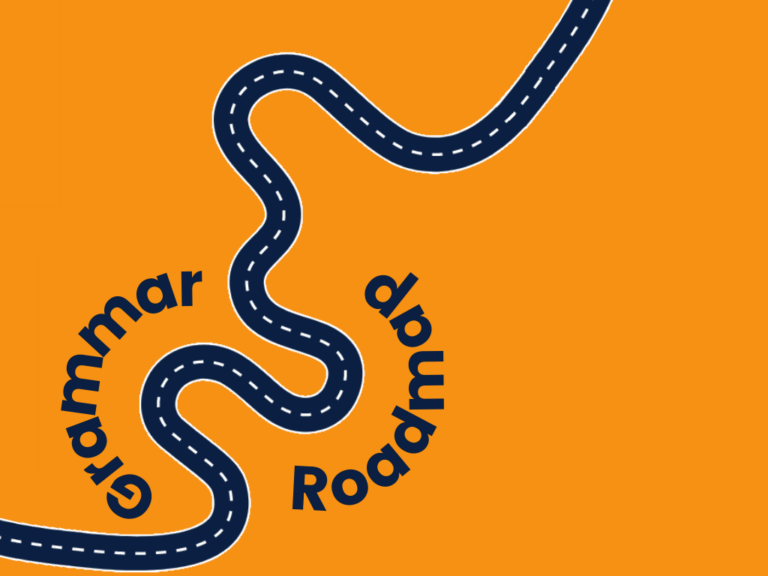
The Past Tense Roadmap
Welcome to the Past Tense Roadmap! The purpose of this roadmap is to guide you through a methodical process to improve your knowledge of past tenses, one step at a time.
No matter which stage of the journey you’re already at, simply follow the steps to learn, develop and excel in your ability to apply grammar rules and exceptions with ease.
KEY:
Present tense grammar is highlighted in red.
Future tense grammar is highlighted in orange.
Past tense grammar is highlighted in yellow.
Conditional tense grammar is highlighted in green.
Imperative mood grammar is highlighted in blue.
Subjunctive mood grammar is highlighted in purple.
Passive voice grammar is highlighted in white











¡VAMOS!
The Grammar Roadmap is a work in progress so please bear with us.
1. Past Simple (Pretérito Indefinido / Pretérito Perfecto Simple):
- Introduce the concept of the past simple tense as the equivalent of the English simple past tense.
- Present regular verb conjugation patterns for -ar, -er, and -ir verbs and explain the different endings.
- Teach the most common irregular verbs in the past simple tense, such as “ser,” “ir,” “estar,” “tener,” etc.
- Cover the affirmative, negative, and interrogative forms of regular and irregular verbs.
2. Past Continuous (Pretérito Imperfecto):
- Explain that the past continuous tense corresponds to the English past progressive tense.
- Form the past continuous tense using the imperfect tense of the verb “estar” + gerund (-ando/-iendo form of the main verb).
- Contrast the use of the past continuous with the past simple tense, focusing on ongoing actions in the past.
3. Past Perfect (Pretérito Pluscuamperfecto):
- Introduce the past perfect tense as the equivalent of the English past perfect tense.
- Teach the formation of the past perfect tense using the past tense of the verb “haber” + past participle of the main verb.
- Illustrate the use of the past perfect to describe actions that occurred before another past event or point in time.
4. Past Perfect Continuous (Pretérito Pluscuamperfecto Continuo):
- Explain that the past perfect continuous corresponds to the English past perfect continuous tense.
- Form the past perfect continuous tense using the past tense of the verb “haber” + “estado” + gerund of the main verb.
- Emphasize actions that started in the past and continued up to a specific point in the past.
5. Past Simple vs. Past Continuous:
- Highlight the differences in usage between completed actions with a specific time (past simple) and ongoing actions in the past (past continuous).
- Provide examples and exercises to practice choosing the appropriate tense based on context.
6. Past Simple vs. Present Perfect:
- Contrast completed actions in the past (past simple) with actions that have relevance to the present (present perfect).
- Clarify that the past simple tense refers to specific past events, while the present perfect focuses on past actions with present implications.
7. Past Simple vs. Past Perfect:
- Differentiate between completed actions at a specific time (past simple) and actions that occurred before another past event (past perfect).
- Explain that the past perfect is often used in combination with the past simple to show a sequence of events.
8. Past Continuous vs. Past Perfect Continuous:
- Help learners recognize ongoing actions up to a specific point in the past (past continuous) and actions that continued until a past time (past perfect continuous).
- Provide examples and exercises to reinforce the distinction between the two tenses.
9. Preterite vs. Imperfect:
- Introduce the preterite and imperfect past tenses and their different uses in Spanish.
- Teach the conjugation patterns of regular -ar, -er, and -ir verbs in the preterite and imperfect tenses.
- Focus on the specific uses of each tense, such as completed actions (preterite) vs. descriptions and ongoing actions (imperfect).
10. Stative Verbs in the Past: – Explain the concept of stative verbs, which express states of being or mental states and are not commonly used in continuous tenses. – Provide a list of common stative verbs in Spanish and explain their conjugation in the past tenses.
11. Past Indefinite (Pretérito Indefinido): – Mention that some regions use the past indefinite tense, which is similar to the past simple but with regional variations. – Provide examples and discuss the situations where the past indefinite tense might be used.
12. Past Subjunctive (Pretérito de Subjuntivo): – Introduce the concept of the past subjunctive mood and its use in expressing doubt, desire, emotions, etc., in the past. – Present regular and irregular verb conjugations in the past subjunctive tense. – Offer examples to practice using the past subjunctive in different contexts.
13. Past Subjunctive vs. Past Indicative: – Compare and contrast the past subjunctive and past indicative moods to understand when to use each one in different situations. – Provide exercises to reinforce the correct use of each mood in the past tense.
14. Past Perfect Subjunctive (Pretérito Pluscuamperfecto de Subjuntivo): – Teach the formation and usage of the past perfect subjunctive, which is used to express actions that occurred before another past event in a subjunctive context. – Provide examples and exercises to practice using the past perfect subjunctive.
15. Common Expressions in the Past Tenses: – Compile a list of phrases, idioms, and expressions commonly used in the past tenses to enrich learners’ vocabulary.
Here we’ll cover not only the regular verbs, but also how to handle
Here we’ll cover not only the regular verbs, but also how to handle
Here we’ll cover not only the regular verbs, but also how to handle
Here we’ll cover not only the regular verbs, but also how to handle
Here we’ll cover not only the regular verbs, but also how to handle
All about the two verbs for “to be” in Spanish: Ser and Estar.
Here we’ll cover not only the regular verbs, but also how to handle
Here we’ll cover not only the regular verbs, but also how to handle
All about the two verbs for “to be” in Spanish: Ser and Estar.
The verb tener and its idiomatic uses
Where to place them, how to choose the right endings and so much more!
The verb tener and its idiomatic uses
Here we’ll cover not only the regular verbs, but also how to handle
All about the two verbs for “to be” in Spanish: Ser and Estar.
Here we’ll cover not only the regular verbs, but also how to handle
Here we’ll cover not only the regular verbs, but also how to handle
All about the two verbs for “to be” in Spanish: Ser and Estar.
The verb tener and its idiomatic uses
Where to place them, how to choose the right endings and so much more!
The verb tener and its idiomatic uses
Here we’ll cover not only the regular verbs, but also how to handle
Here we’ll cover not only the regular verbs, but also how to handle
Absolutely everything you need to know about nouns for everyone from absolute beginner to advanced expert.
Learn to improve your Spanish using a range of time phrases in a range of different contexts
Absolutely everything you need to know about nouns for everyone from absolute beginner to advanced expert.




